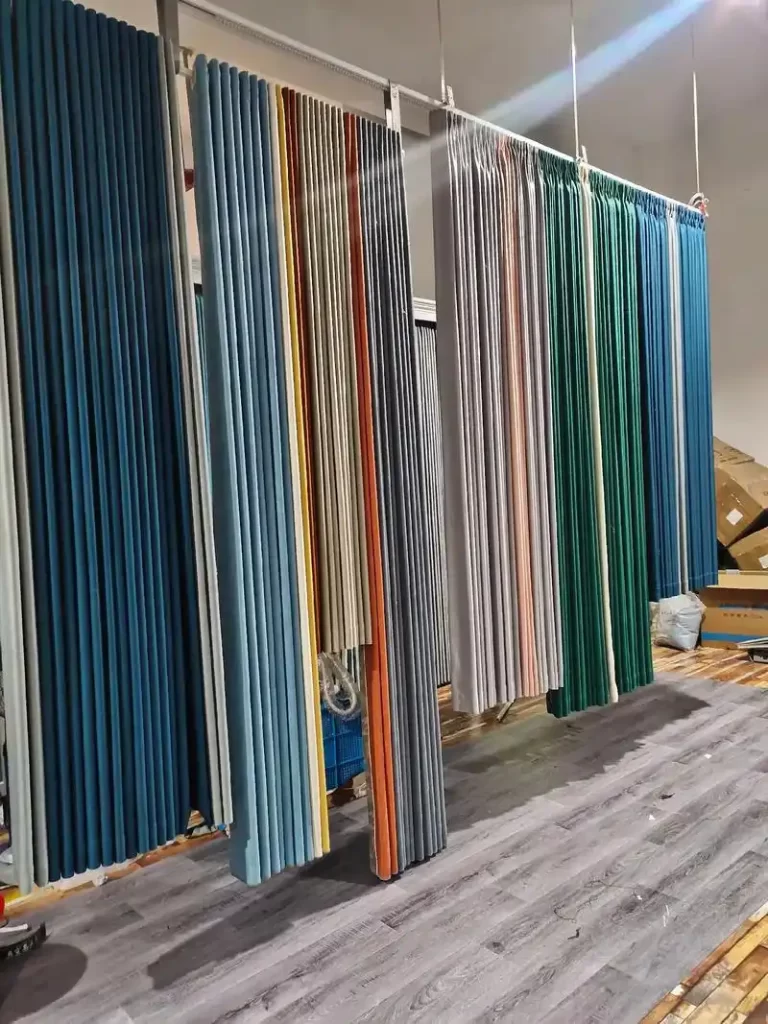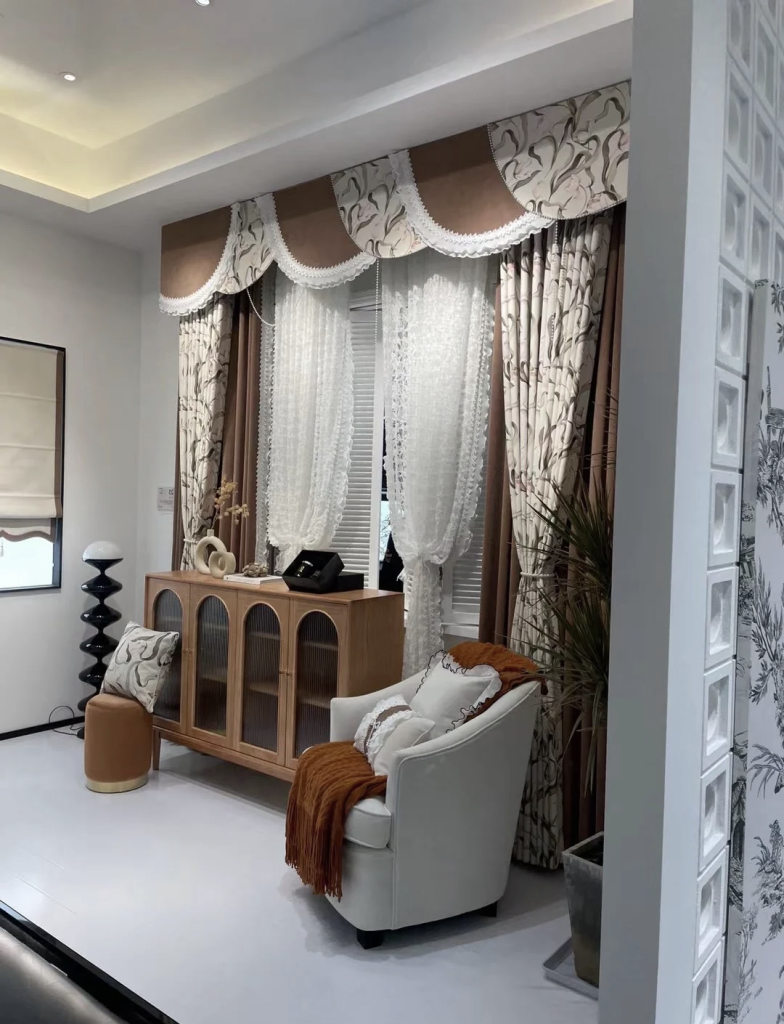


If you’ve ever stood in front of a window, squinting at harsh sunlight or shivering in a draft, you know curtains aren’t just fabric—they’re a buffer between your space and the world outside. They’re the difference between a room that feels lived-in and one that feels generic. As a curtain supplier who’s spent over two decades stitching, measuring, and listening to clients, I’ve learned this: the best curtains aren’t mass-produced. They’re born from understanding—understanding your space, your habits, and the unspoken needs that turn a house into a home. Let me walk you through what makes our curtains different—and why they’re worth investing in.
It Starts With a Question: “What Does Your Window Need?”
Most curtain shopping trips begin with, “I need curtains for my living room.” Ours start with, “Tell me about your window.”
Take Mrs. Alvarez, a retiree in Miami who called us last year. “My apartment faces east,” she said. “The morning sun wakes me up at 6 a.m.—too early for a Saturday. But I hate heavy curtains; they make the room feel dark.” Off-the-shelf blackout curtains? Too thick, too gloomy. Sheer linens? Let in too much glare. So we dug deeper. Did she open the windows often? (Yes, for fresh air.) Did she have plants near the sill? (A fern that wilted in direct sun.) Did she entertain? (Weekly card games with friends, who loved the view of her garden.)
We chose a lightweight cotton-linen blend, woven with a tight enough weave to block 80% of morning light but loose enough to let in soft, dappled rays. We added a removable sheer overlay—so she could lift it on weekends for full garden views. The hem? Extra-long, to pool on her hardwood floors, adding warmth. When she hung them, she called: “Now I get to sleep and keep my fern happy. Perfect.”
That’s our process: we ask about the life happening around the window, not just the window itself. A kitchen needs stain-resistant cotton for splatters. A nursery needs breathable fabrics for airflow. A home office needs sound-dampening layers to muffle street noise. These details aren’t add-ons—they’re the foundation of every design.
Fabric: The Foundation of Trust
I’ve seen clients cry over curtains that frayed after three washes or faded to a dull gray in one summer. Cheap fabric betrays you. That’s why we treat every bolt like it’s going into our own homes.
Our fabric selection is intentional:
-
Organic cotton: Soft, breathable, and free of harsh chemicals—ideal for babies’ rooms or bedrooms where you want to breathe easy. We pre-wash it twice to prevent shrinkage, so it stays true to size wash after wash.
-
Belgian linen: It wrinkles, yes—but that’s its charm. Over time, it softens like a well-loved sweater, draping beautifully over windows. Perfect for living rooms or porches where you want “lived-in” elegance.
-
Recycled PET blends: Made from plastic bottles, this fabric is tough enough for high-traffic areas (think restaurants or entryways) and dyed with non-toxic pigments that won’t bleed. A beachside café client told us, “Your curtains have survived sand, salt, and spill-prone kids—and they still look brand new.”
We also prioritize sustainability. Many of our fabrics carry OEKO-TEX® or GOTS certifications, meaning they’re free of harmful chemicals and produced ethically. A young couple in Portland chose our organic cotton curtains for their new baby’s room: “We wanted something safe for her, and your fabrics checked every box.”
The Craft: Where Details Become Magic
Curtains look simple, but their quality lies in the invisible work: the stitching, the lining, the hardware compatibility.
Every panel we make goes through 12 steps:
-
Precision cutting: Using laser-guided machines to ensure straight edges—no crooked hems.
-
French seams: Encasing raw edges to prevent fraying, even after years of use.
-
Weighted hems: Adding small strips of linen at the bottom to keep curtains pooling evenly, not bunching.
-
Lining layers: For blackout or thermal curtains, we sew in separate lining pockets—so the outer fabric retains its pattern while the lining does the work.
Last year, we reupholstered curtains for a historic theater in Boston. The original panels were 80 years old, faded but beloved. We matched the fabric (a vintage floral print) using century-old dye recipes, reinforced the seams, and added discreet Velcro tabs for easier cleaning. The theater director said, “You didn’t just repair curtains—you preserved history.”
The Experience: Warm, Transparent, and Yours
Buying curtains shouldn’t feel like a chore. It should feel like working with a friend who knows their stuff.
-
No-pressure consultations: Visit our studio, where bolts of fabric line the walls like a rainbow. Or hop on a video call—show me photos of your space, tell me about your cat (we’ll avoid white fabrics if he sheds!), or gush about the sunset you want to frame. No clipboard, no hard feelings.
-
Samples that live with you: Want to test how a sage green linen curtain drapes in your north-facing room? Hate the way a charcoal panel feels in person? We’ll mail you physical samples—with prepaid return labels—so you can live with them for a week. A client in Chicago told us, “I kept your ivory cotton sample on my couch. It matched the afternoon light exactly how I imagined.”
-
Updates, not surprises: You’ll get photos of your curtains mid-production: the fabric being cut, the seams stitched, the final press. We’ll text when they’re loaded onto the truck and include a handwritten note—“These have been in our thoughts since our first chat. Hope they bring you as much joy as they did to our team.”
Curtains That Grow With You
The best window treatments aren’t static. They adapt—as your life changes, your style evolves, or your needs shift.
-
A young couple in Denver started with lightweight cotton curtains in their first apartment. Three years later, with a baby on the way, they called us to add blackout liners to the same panels. “We love the fabric—we just needed function,” they said. We reused the existing panels, adding a removable lining that zips on/off.
-
A boutique hotel in Sedona updated its lobby last year. They kept our original curtains (a desert-inspired print) but added motorized tracks for easier operation. “Guests still compliment the curtains—they’re part of the hotel’s identity,” the manager told us.
Why Partner With Us? Because We See Your Space as More Than a Room
Over the years, clients have become family. We’ve mourned with a family who lost a loved one and wanted curtains that felt “lighter” for their new home. We’ve celebrated with a couple whose startup succeeded—their first office curtains now hang in their CEO suite. We’ve even fixed a torn curtain tie for a bride whose wedding photos featured our panels (yes, we kept the spare!).
Being a curtain supplier isn’t about moving bolts of fabric. It’s about trusting that your windows deserve care, creativity, and a little bit of heart.
So whether you’re furnishing a dream home, refreshing a café, or reimagining an office, let’s create curtains that don’t just cover glass—they cradle the life inside.
Send us a message, swing by for a cup of tea, or share a photo of your space. We’d love to help your windows tell their story.

No reply content